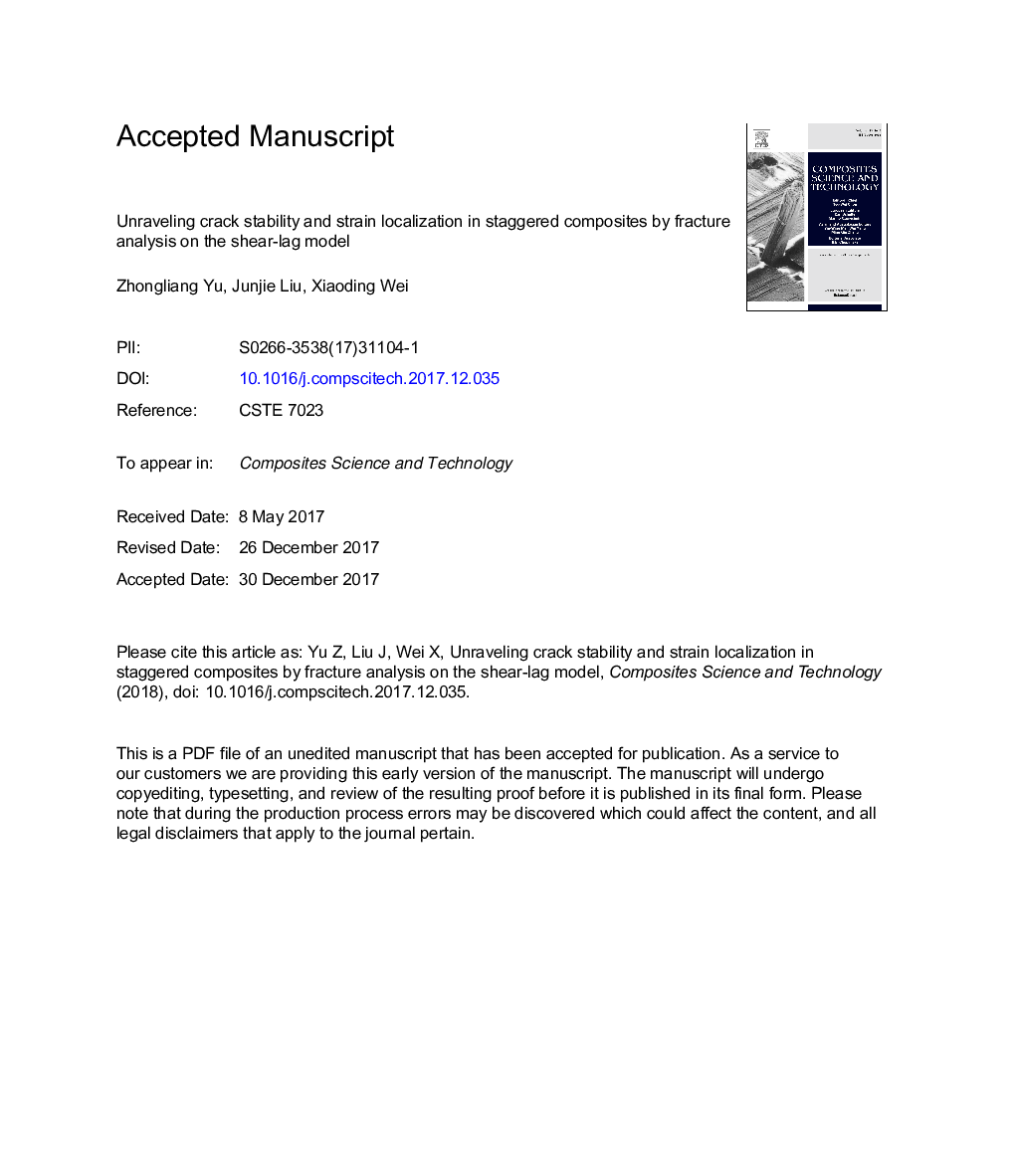| Article ID | Journal | Published Year | Pages | File Type |
|---|---|---|---|---|
| 7214768 | Composites Science and Technology | 2018 | 22 Pages |
Abstract
Bio-inspired composites can achieve excellent toughness while maintaining their strength through hierarchical microstructure designs combining strong and brittle reinforcements and soft yet ductile matrices. The interfaces between reinforcements and matrices transfer loads through shear deformation and deflect cracks along themselves to dissipate a considerable amount of energy. In this way, the catastrophic failure, which is common in monolithic reinforced materials due to the severe stress concentration near the defects, is deferred in hierarchical composites. Yet, recent computations and experiments suggest that strain localization arising from the unstable crack propagation along interfaces leads to the composites failure. In this study, fracture analysis is carried out on staggered composites with the brick-and-mortar structure. An analytical formula predicting the onset of strain localization emerges from the analysis and is validated by finite element analysis. Furthermore, showing good agreements with independent tensile tests on multi-layer graphene assemblies, our model demonstrates its applicability to explain the strain localization in composites consisting of interfaces that function through re-formable bonds. Characteristic length scales emerging from the analysis can be used to guide the composites design to optimize material toughness and ductility.
Related Topics
Physical Sciences and Engineering
Engineering
Engineering (General)
Authors
Zhongliang Yu, Junjie Liu, Xiaoding Wei,
